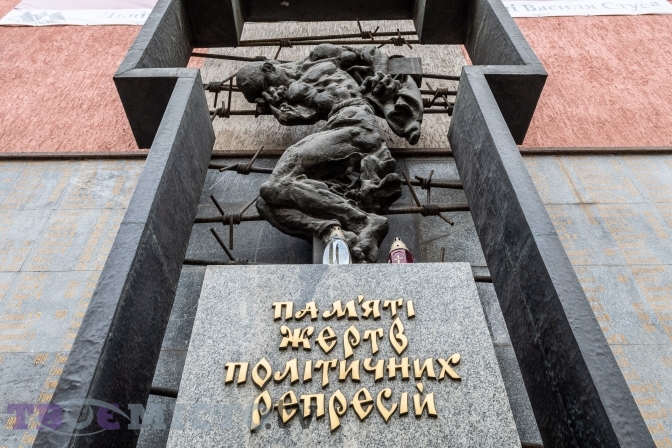
[For urgent updates please follow Ukrainian Freedom News on Telegram]
More than 200 thousand Galicians – Poles, Ukrainians and Jews – were deported to Siberia from 1939 to 1941 by the Soviet regime. During the next two years, the Nazi regime exterminated more than 100,000 Lviv Jews. This was narrated by Halyna Vyliyka, the author of the «Lviv: Life on the Territory of Terror» tour, organized by the Territory of Terror Museum.
Soviet occupation and propaganda through cinema
The Soviet government, which established the first occupation regime in the city in 1939, came to Galicia with the thesis of liberation from Polish oppression. Therefore, the first victims of Soviet repression were the Poles.
Each new regime that conquered Galicia renamed the urban space in its ideological language. Therefore, when the Soviet authorities came here, they immediately renamed Svobody Avenue to May Day Avenue, and after World War II – Lenin’s Avenue.
At the same time, powerful propaganda began that the people of occupied Lviv were extremely happy to become citizens of a new progressive young state called the Soviet Union. However, such thing as repressions against certain national groups was not mentioned.
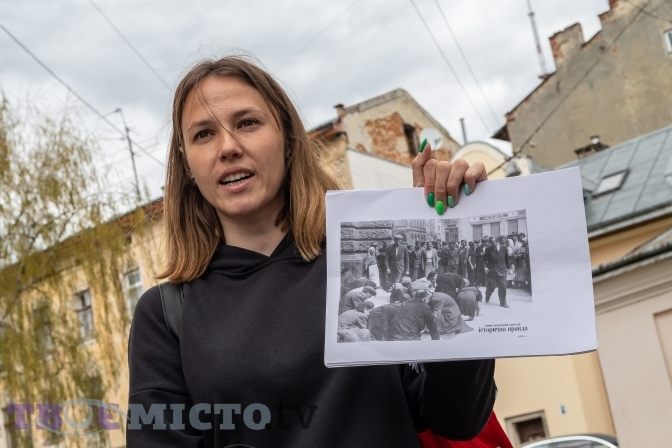
Halyna Viliyka – the guide of the Territory of Terror Museum
Soviet propaganda was promoted by advanced methods, in particular cinema. If in September before the Second World War, there were seven cinemas in Lviv, their number reached 25 in two months, as for November 1939.
According to historical chronicles, films were also brought from abroad. But almost immediately, the Soviets launched their own film industry. In 1939, a prominent Ukrainian film director, Oleksandr Dovzhenko, was invited to Lviv. He came here with his wife and began work on a film to celebrate the anniversary of the «accession of Western Ukraine to the Soviet Union,» which was shown a year later, in September 1940. It was called literally this way: «accession». That film contained the main thesis that was manipulated: the brotherhood and friendship of Ukrainians, Russians and Belarusians.
People’s «referendums», prisons and deportations
In October 1939, the so-called People’s Assembly was convened near the Opera House. This is what pseudo-referendums are holding today in the eastern part of Ukraine. They took stage photos with «peasants» who seemed to have desire to become Soviet citizens. In this so-called referendum, several laws were passed. In particular, the law which provided for nationalization, Sovietization and collectivization. According to it, all private property should go to the balance of the state. Anyone who resists is a criminal, so he can be arrested and deported to Siberia.
Read also: Fortress-сity, or what is Lviv for Putin
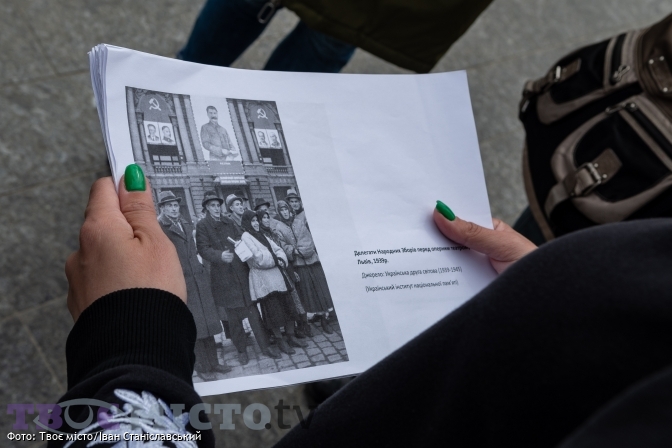
Delegates of the so-called People’s Assembly in front of the Lviv Opera House. Approximately 1939.
Oleksandr Loktionov’s painting «Moving to a New Apartment» illustrates that period, because all people who did not sign the voluntary nationalization were arrested and deported. Their apartments became a place where the so-called new tenants, «owners» settled.
Ukrainians, who were young at the time, told our museum about the eviction. Such one was Mykhailo Bachynskyi. His family was deported because she was not under pressure.
«The red commissar came and said we would go to dad. He has already been arrested. Mom didn’t take a spoon or a fork, nothing. I thought we were going to be shot. There was no other opinion. We didn’t take anything. All that remained was what the Soviet officer threw on the sledge. As a boy, I took the «Bumblebee» [a fairytail], the book, and the Gospel. I don’t know how I got it, but I still have it. Maybe, my mother took it, I don’t remember. I took a pack of pencils and a pile of notebooks. Then, in Kazakhstan, I sold sell them and exchange them for bread – it was a currency,» – recalls Mykhailo Bachynskyi.
Read also: Innovative museum tells stories of Soviet-ordered deportation from western Ukraine to Siberia
Analogies can be made, and they’re unbelievable, given that people today are fleeing from the war zone and also take with them the most valuable things. Someone comes with a small backpack, that’s all. And for some, it’s a violin, a book, pencils and notebooks.
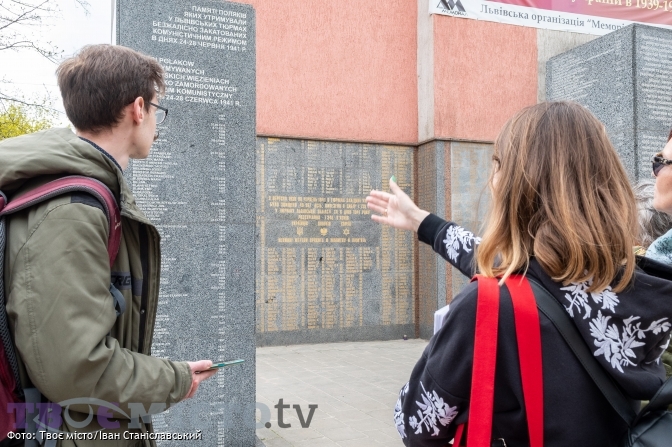
Monument to the victims of political repressions, st. Zamarstynivska, 9
All nationalities of Galicia suffered equally from the Soviet occupation. Absolutely all citizens were arrested, prosecuted, «tried» and sent to deportation. The Soviets nationalized property, evicted, and then shot Poles, Jews, and Ukrainians. First, the intelligentsia, priests, and small business owners were killed.
Initially, they were taken to prisons, where so-called interrogations took place. A case was opened before there was a trial. There were four such prisons in Lviv: three large ones and one torture chamber, in particular, on Lontskoho and Horodotska streets (Bryhidka). Once, there was the monastery of St. Brigid, which by imperial cassation was turned into a prison. In fact, it is still functioning, but as a pre-trial detention centre. The third prison was in Zamarstyniv.
Soviet shootings in Lviv
In the early summer of 1941, when it became clear that the Germans would declare war on the Soviet Union, Soviet authorities began to evacuate. They were not going to oppose the Germans in western Ukraine, but simply wanted to retreat. However, prisons throughout Galicia were filled with those they considered criminals who could potentially cooperate with hostile authorities. The Soviet government found nothing better than to eliminate them.
On June 22, 1941, Germany declared war on the Soviet Union. The first airstrikes began, and Lviv appeared under the bombs. The Soviet government had little time to escape. Within a week, it had exterminated all political «criminals.» In the first days, they were lined up in the yards and shot. Later, the guards simply threw grenades into the cells. During the two years of Soviet occupation, about 200,000 people were arrested and deported. About 7,000 were killed in a few days in June 1941. Thousands of people were found in the Lontsky prison alone. To this day, excavations and reburial are carried out. It was a huge crime.
Nazi occupation and pohroms
On June 30, 1941, a new invader entered Lviv – Nazi Germany, which carried out its propaganda. She opened the gates of the prisons and invited the townspeople to come and see, and pick up the bodies of their relatives. They accused the Jews of collaborating with the Soviet authorities. It was not said that they were also victims of Soviet terror, only that they were traitors and collaborators who carried out the criminal orders of the Soviet government.
The Jews of Galicia declared themselves neutral and cared more for their own education and well-being. But this position was one of the reasons that made them victims. This was used by propaganda regimes to mock them.
Read also: «We came back to 1944.» Vitaly Portnikov about the lessons of World War II
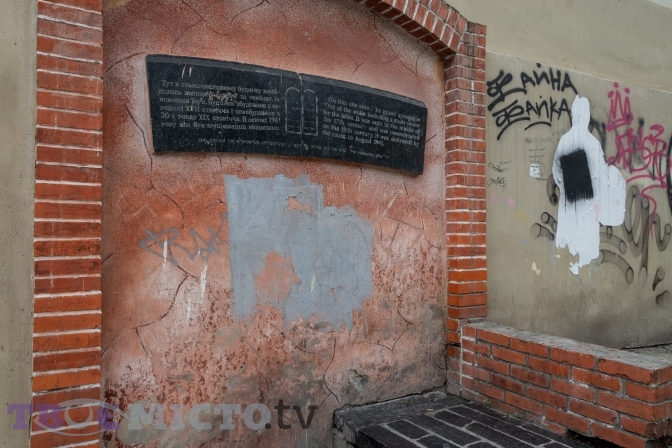
Memorial sign on the site of the former synagogue
The Nazis called the Jews «communists». The result was an unfortunate stage in history – for three weeks in Lviv in July 1941, the so-called «pohrom» took place. Ukrainians and Poles who attacked Jews on the streets of Lviv lurked in their homes, dragged them to prisons, forced them to dig up and retrieve the remains of those killed there, and reburied them in Yaniv Cemetery. This was fueled by the Nazi occupation authorities. Among the methods of humiliating the Jewish population was that of forcing the pavement to be cleaned.
Urbicide
At about the same time, the Gestapo raided the destruction of Jewish monuments. In particular, synagogues were destroyed. On Staryi Rynok Square was the largest synagogue in Lviv – the Temple of Reformed Jews, which was built thanks to prominent Lviv architects in the middle of the XIX century. It was destroyed in the summer of 1941 along with other synagogues. And there were about a hundred of them.
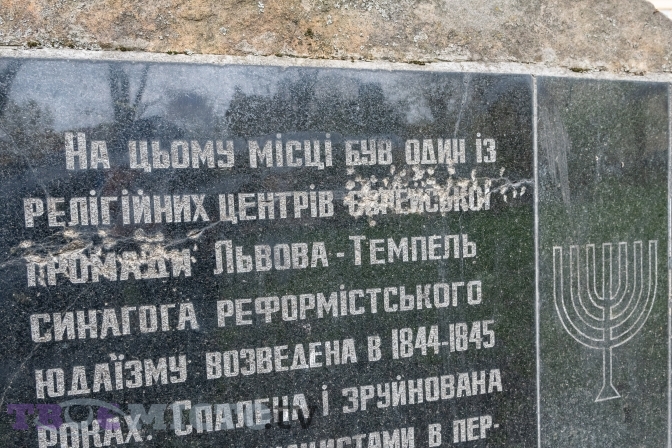
In total, there were 150 synagogues in Lviv – plus 50 private prayer rooms located in houses. Due to the Nazi urbicide, which destroyed not only the Jewish nation but also the city, four synagogues remained. This was described by Yevhen Nakonechnyi in the book «The Shoah in Lviv.»
Judenrat
In August 1941, two months after the invasion, the Germans announced the creation of the Judenrat, a Jewish council subject to Gestapo orders. This was practiced in many cities of the occupation. The same was true in Krakow and Warsaw. It was one of the ways of humiliation and manipulation. People believed that working in the Judenrat would save their lives, but they were also the last to be destroyed.
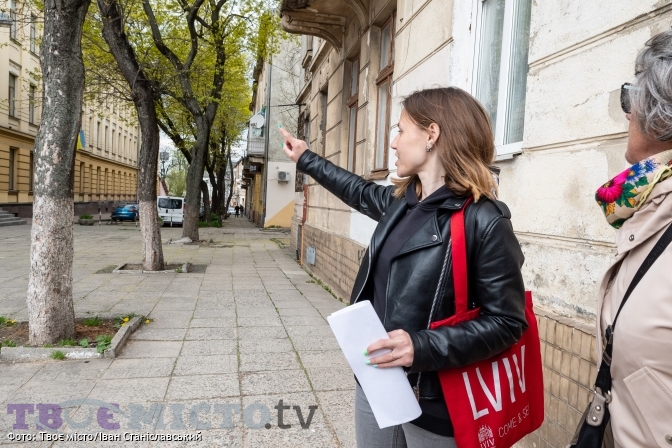
The guide points to a house on the territory of the former ghetto, where the Judenrat was located, st. Kushevicha, 5
In the first year of the Judenrat, there were 1,000 workers, and a year later, there were 5,000. One of its divisions was the Jewish police. There were both Ukrainian and Polish police. They all committed crimes against the Jewish population.
Ghetto
The city was divided into a ghetto in the Pidzamche district, a public part – the centre where Ukrainians and Poles lived, and a governmental Aryan part on the current streets of Konovaltsia, Chuprynky and Heroiv Maidanu. This area was inhabited by Germans.
For the first six months, Jews moved freely in Lviv, but new orders were issued every week. In particular, Jews were forbidden to use pharmacies, visit cafes, they were not allowed to walk on the sidewalks – only on the roadway, they were told the rule to always wear the Star of David, sewn on the left hand.
The ghetto began to be arranged in November 1941. In two months, absolutely all Jews had to move there. Among the townspeople, there were about 110,000, and up to 50,000 Jewish refugees fleeing the German invasion of Poland to Lviv.
Read also: »I touched them and cried»: Jewish Ghetto Items found in Lviv attic
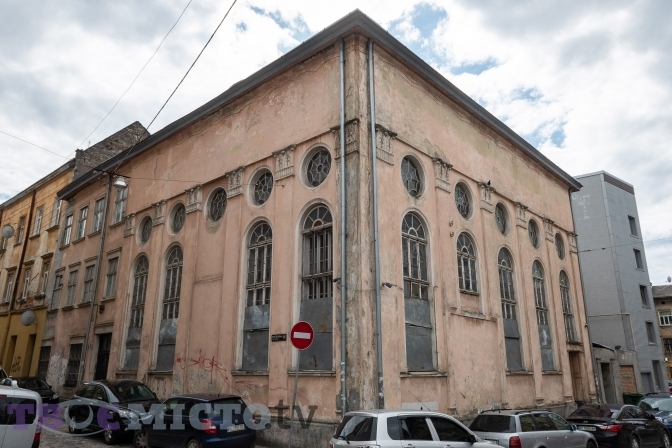
Hadashim Synagogue is one of the two surviving synagogues in Lviv. The synagogue building is located at the intersection of Vuhilna Street and St. Theodore Square
Some of them were deported to Siberia by the Soviet authorities, but about 120-130 thousand remained in Lviv. They were to be located on the territory of Pidzamche district of Lviv. The main gate there was on Zamarstynivska street. Two more gates were on the current Dzherelna and Chornovola, then – Poltvyana street. But in fact, the move was delayed for a year.
In the ghetto, one Jew had two square meters of space. At first, each of them had to go to work. The Germans were of the opinion that if you do not work, you have no right to live. Thus arose the camp of forced labor – a concern of German enterprises for sewing clothes, taking, uniforms, production of devices, weapons, ammunition. The main centre was on Shevchenka Street (formerly Yanivska). There was a camp, which was later named Yanivskyi. And Jews had to go there every day to work.
They had to obtain an employee certificate, where additional stamps had to be affixed every few weeks. It was simply not allowed to go outside the ghetto – only to work. If the Jewish police checked the documents and did not have the necessary seals, the person was arrested immediately.
In the ghetto, Jews were «selected» – able-bodied were separated from the incapacitated. Young children, people with disabilities and the elderly were kept at the Jan Sobieski School. They were later stuffed into wagons and sent to the Belzec death camp. Almost 12,000 people were killed in the first few weeks.
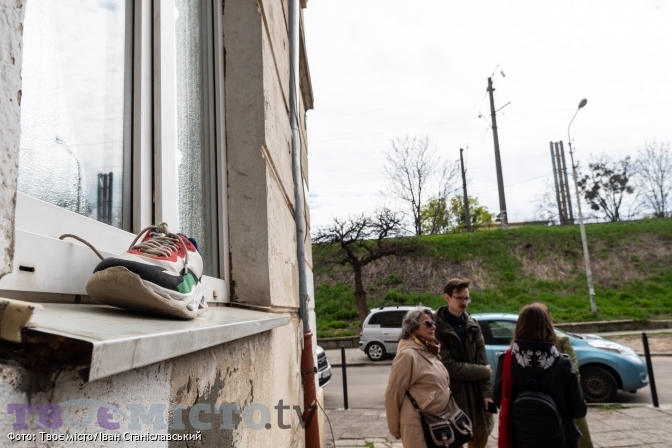
On the territory of the former ghetto
It was initially thought that Jews would be brought to the labour camp from the ghetto and then returned, but the Germans realized that this required considerable resources, so the camp forced these Jews to build barracks. First, it was a forced labour camp, then a ghetto, then a transfer point – the Klepariv station, where Jews were transported to Belzec (in 1943, it became a death camp and did not accept anyone else – ed.) A sand quarry for mass shootings was built nearby.
Yaniv camp
About 80% of Lviv’s Jews were deported to Belzec and Sobibor, another camp. Another 20% were murdered in Lviv. Only 2% managed to survive the Holocaust – one or two thousand.
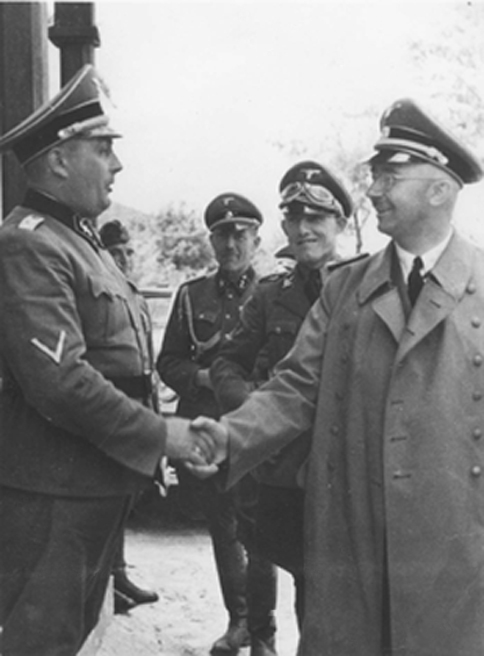
Nazi leadership: Friedrich Varzok, Fritz Katzman and Heinrich Himmler at the Yaniv (Janow) Forced Labor Camp in Lviv
It is impossible to say how many people were tortured in the Yaniv camp. In 1943, the Germans declared Lviv free of Jews and began actions to eliminate evidence of crimes. Polish and Ukrainian police – sonderkommando – exhumed the bodies from the mass graves and destroyed them with the help of stone crushers (stone crusher from Lviv is now exhibited in the Museum of World War II in Kyiv – ed.)
Approximately 35,000 people in Lviv were shot in the sand near the Yaniv camp. Employees of the Judenrat and the Jewish police also did not escape – they were the last to be shot.
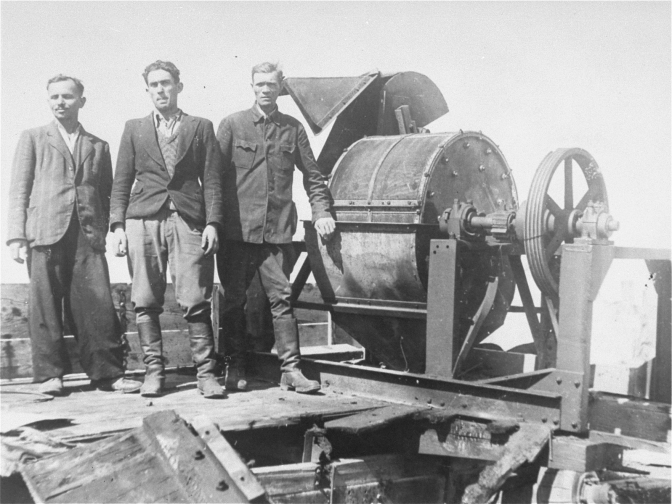
Former members of the sounding team demonstrate a machine for grinding bones in the Yaniv camp (approximately 1944-1945)
It was impossible to carry out a revolution. Each uprising was accompanied by actions to eliminate the Jews. Many Jewish police officers were hanged for killing one German.
Life underground in the reservoirs of Poltva river
The territory of the ghetto was shrinking every year, and in 1943 it was called Judenlager, a Jewish camp. Each barrack had its own name, where specific employees of specific enterprises worked. In total, there were several dozen barracks. The Territory of Terror Museum is now located next to them.
Christine Higer, one of the survivors, wrote the book «The Girl in the Green Sweater». The Higer family moved to Judenlager from a spacious apartment on Kopernika Street in 1941. In 1943, when the ghetto area was reduced to 14 barracks, they desperately dug a tunnel to Poltva with spoons under the barracks for a week. A 50-centimetre hole was punched in the concrete collector, and 50-70 people fled the camp.
Read also: Researchers discover Jewish hiding place underneath Lviv
They came across a utility worker who agreed to take 21 people. Among them was the Higer family.
The Jews hid under the hatch near the Church of the Virgin Mary of the Snows and under the hatch near the Church of St. Andrew. Stayed underground for 14 months without normal food, air and water. One of the men passed underground every day, holding teapots in his teeth, to the fountain under the Market Square – to Neptune, because a well was there. He collected as much water as the kettle could hold.
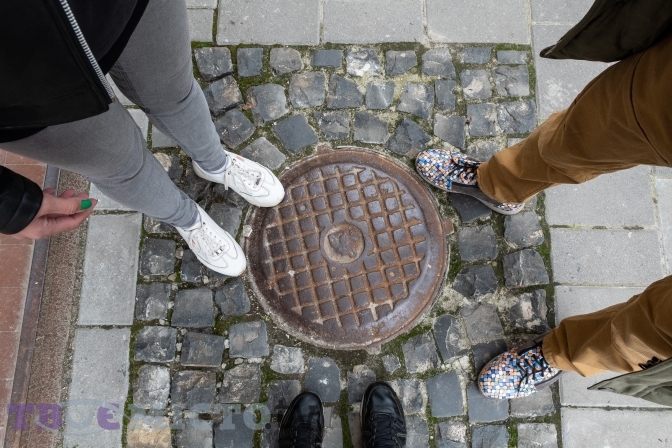
One of the hatches near the Church of the Virgin Mary of the Snows, under which Jews in Lviv probably lived for 14 months
Christine Higer, the author of the book, one of the Holocaust survivors, has been wearing a green sweater all this time. In 2006 she came to Lviv and had a presentation at the City History Center. In 2018, an underground route that saved Jews was presented.
New Soviet occupation and continuation of crimes
In 1944, on the site of the Judenlager, the Soviet authorities set up fortification No. 25, a prison for those deported to Siberia. Until 1955, repression continued here. That is why we are talking about victims not only of the German but also of the Soviet period. One of those «calf» cars that took people to Siberia is still among the exhibits.
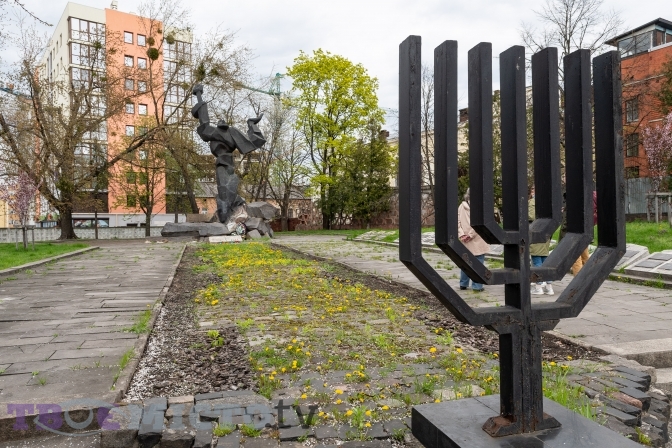
Monument to the victims of the Lviv ghetto on Chornovola Avenue
By Roman Tyshchenko-Lamanskyi, translated by Vitalii Holich
Photo: Ivan Stanislavsky
Full or partial publication of the text without the written consent of the editors is prohibited and is considered copyright infringement.
Follow us on Facebook and Instagram. Lviv Now is an English-language website for Lviv, Ukraine’s «tech-friendly cultural hub.» It is produced by Tvoe Misto («Your City») media-hub, which also hosts regular problem-solving public forums to benefit the city and its people.












